|
The Stellar Music project in summary - take musical notes generated mathematically from a star, arrange them into a beautiful tune, and then use your imagination to think of unique ways to illustrate the music. To discover how the music was created visit the blog: innovaspace.org/blog/stellar-music Music: - Star used = Delta Cephei, part of the constellation Cepheus - Music arrangement = Miko Mike Oliver Gimao Visuals: - AI-generated visuals = Elerias - Mermaids = Yanyue Lee; Jingfeng Liu; JingYi Lee; Surong Wang; Meijing Lee; & Xiao Qian Bai Enjoy the cosmic music 🌟🌟🌟 Author: Nelson VinagreAerospace Exercise Physiology & Rehabilitation Lead; Coordinator, Portuguese Hub - InnovaSpace Não sou tão velho assim nem tão novo, mas já vivi suficientemente para ter muitas experiências em ambientes extremos e radicais, onde pudéssemos observar a resposta fisiológica do corpo humano exposto a estas diferentes situações. Em minha história esportiva, trago a natação como base de meu treinamento fisiológico, onde durante anos treinei para competições e depois que me tornei educador físico, treinador, instrutor em salvamento aquático e pesquisador nas áreas do treinamento. Assim, pude compreender ainda melhor muitas reações que se passavam comigo e com as pessoas com quem eu trabalhava. Como hobby e amante do esporte, fiz parte de uma geração que ajudou a quebrar os tabus da imagem do surf, que era considerado esporte de malandro, e que hoje veio a se tornar esporte olímpico e modalidade profissional. Nos anos 90, além de ter realizados treinamentos de mergulho com garrafa, na famosa Escola Superior de Esportes de Colônia/Alemanha (Deutsche Sport Hochschule), pude realizar mergulhos na costa brasileira tanto com garrafa quanto com snorkel no Pantanal, em Bonito, no Mato Grosso do Sul, em meio as Piraputangas. Paralelamente a vida acadêmica que se iniciava, a partir dos 17 anos me dedicava intensamente as lides aéreas, onde pretendia me tornar aeronauta e piloto profissional de linhas aéreas. Foram muitos anos de dedicação teórico-prática, fazendo minhas licenças de piloto planador, privado, comercial, instrumentos, multi-motor, rebocador e agrícola, que me remeteram a algumas centenas de horas de voo e ainda mais pousos e decolagens, especialmente pela operação de planadores, que exigia de mim, como rebocador, múltiplas subidas e descidas em curto espaço de tempo. Nessa situação, apesar de estarmos atuando dentro de uma altitude fisiológica, certamente impunha ao meu organismo um condicionamento físico razoável dado pela resposta hemodinâmica, proprioceptiva, vestibular... Nos diferentes locais onde atuei profissionalmente, pude perceber que sou plenamente adaptável a distintos ambientes. Parti de Porto Alegre 1993 rumo a Serra Gaúcha, que além de ser uma das regiões mais frias do Brasil, encontra-se a 1000m de altitude, requerendo de nosso organismo certa adaptação em relação ao nível do mar. Na busca de novos desafios desportivos, inovadores e de interação com o meio, lá estávamos a descobrir nova modalidade que no Brasil ainda não havia ressonância, o rafting que pela primeira vez realizava uma competição no Vale do Paranhana. Depois desse período de “treinamento e exposição a temperaturas mais baixas” por 14 meses, mudei-me para a Alemanha em função do estágio acadêmico no departamento de esportes de inverno da famosa Escola de Colônia, em pleno inverno, tendo que me adaptar abruptamente do auge do verão brasileiro para temperaturas constantemente abaixo de zero e uma realidade climática completamente diferente a encontrada no Brasil, ainda que viesse de uma região sub tropical. Na década seguinte e com novos desafios acadêmicos profissionais no Brasil, tive a incumbência de coordenar um curso na Amazônia Ocidental, mais precisamente no Estado de Rondônia, próximo à fronteira do Brasil com a Bolívia, onde as temperaturas se aproximavam da casa dos 44 graus Celsius e a umidade relativa média do ar era superior aos 70%, para não falarmos das questões da saturação de litometeoros no ar, ocasionado pela fumaça em excesso gerada por grandes queimadas. Novas fronteiras acadêmicas e desportivas surgiram e, de volta a Alemanha, tive a possibilidade de aprofundar minha carreira profissional junto à Agência Espacial Alemã (DLR) e ao Departamento de Medicina Desportiva da Universidade de Göttingen. Com ambas instituições, realizei meu aprofundamento cientifico junto aos desportos adaptados e inclusivos. Já são mais de 14 anos enxergando o movimento humano sobre outra perspectiva, seja do ponto de vista das limitações fisiológica e biomecânicas, seja psicossocial, seja das transferências tecnológicas, mas acima de tudo, partindo da percepção de um continuum desenvolvimental. Novos ventos, literalmente, desta vez me levaram ao ponto mais Ocidental da Europa, de onde escrevo este mais recente relato de experiencia desportiva de minha vida, a regata marítima que, diga-se de passagem, em muito tem a ver com o voo à vela. Essa nova experiencia me remeteu a um novo ambiente, do qual se pode extrair inúmeras reações comportamentais (psycho-enviroment behavior) e fisiológicas, a partir uma vivência que em muito pode nos ajudar na realização de novos experimentos e a entender o que se passa fisiologicamente com nosso organismo nos processos de desorientação espacial e os efeitos indesejáveis por ela gerados.
Author: Dr K GanapathyHon Distinguished Professor The Tamilnadu Dr MGR Medical University; Emeritus Professor, National Academy of Medical Sciences; Past President, Telemedicine Society of India & Neurological Society of India; Director Apollo Telemedicine Networking Foundation & Apollo Tele Health Services, India Website: www.kganapathy.in When I was asked to write a blog on women from India who have made extraordinary contributions to society, I was very surprised. Being a desi, a totally “Made in India” product, I had in the last seven decades not thought twice about the gender of any super achiever in India. When I was an Asst Professor of Neurosurgery at the globally renowned 187-year-old Madras Medical College, my unit chief was Prof T S Kanaka, celebrated as Asia’s first neurosurgeon , while the dean was also a woman, as was the Director of Medical education, the Vice Chancellor, the Health Secretary, and even the Chief Minister of the state! From 1983 I have been part of Apollo Hospitals, one of the world’s largest corporate health care providers. Though founded by the patriarch Dr Prathap C Reddy, it is his four daughters (see images below) who have ensured that this mega conglomerate is setting standards for other countries to follow. I belong to the 1968 batch of the Madras Medical College. When one of our classmates, Dr Sherin Devaskar, was elected as President of the American Pediatric Society none of us even commented that she was of female gender. Indeed, most of the achievers in our batch are women. It is just taken for granted. We are gender agnostic !! As early as 1949, Hansa Mehtha was appointed as Vice chancellor of the Baroda University. I wonder how many countries had women Vice Chancellors back then, and we were called the “third world” ! It is only now that I realise that the rest of the world has a long way to go before they accept gender neutrality. Scores of women from India have been featured in global rankings, as entrepreneurs, CEO’s of Fortune 50 companies, in the Forbes list of world’s 100 most powerful women, as Heads of some of the world’s largest banks, Chief Justices of High Courts, Supreme Court judges, Governors and Chief Ministers of states larger than most countries of the world, as Deputy Governors of the Reserve Bank of India, Chief Economist of the World Bank, and as Chief Scientist of the WHO, and so the list goes on. Indian women have gone to the Artic and Antarctic. Recently UK-based Captain Harpreet Chandi, of Indian origin, reached the South Pole after a 700 mile trek in 40 days. 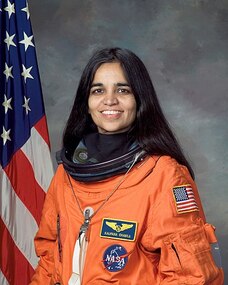 Indian-born NASA astronaut Kalpana Chawla (Image: NASA) Indian-born NASA astronaut Kalpana Chawla (Image: NASA) Lucknow-born Hashima Hasan played a major role in the design and launch of the $10bn James Webb Space Telescope. The landing of the Perseverance rover on the Red Planet following its perilous descent through the Martian atmosphere was facilitated by two women of Indian origin, Vandi Verma and Swati Mohan. Yet another, Bhavya Lal, recently took over as Associate Administrator for the Office of Technology, Policy and Strategy NASA, one of the highest posts in NASA. Nearer home there are several Director level women scientists heading critical teams dealing with human and interplanetary missions, including Ritu Karidhal, Nandini Harinath, TK Anuradha, and VR Lalithambika. And Kalpana Chawla (1962 – 2003) was the first Indian-American astronaut and first Indian woman in space. Sadly, on February 1, 2003, the U.S. space shuttle Columbia with a seven-member crew that included Chawla, disintegrated in flames over central Texas shortly before it was scheduled to land at Cape Canaveral in Florida. Virtualmente em Marte - Minha Experiência como Astronauta Análogo na Estação Habitat Marte24/2/2022
Author: Maurício PontesOperational Safety & Crisis Manager, Pilot, Air Accident Investigator Encerramos após 11 dias (ou 11 sois, como denominamos o dia em Marte) a missão análoga (virtual) #96, celebrando quatro anos do estabelecimento da Estação Habitat Marte. Tive o privilégio de representar a InnovaSpace nessa experiência, que se revelou produtiva e instigante. As missões virtuais foram criadas em função da pandemia de COVID-19, como forma de manter a estação operando e fomentando o intercambio de experiências e informações sobre Marte e os desafios de se chegar ao planeta vermelho. A pioneira estrutura análoga, entretanto, é muito mais que isso. Localizado no agreste do Rio Grande do Norte, na cidade de Caiçara do Rio do Vento, o Habitat Marte é uma base física onde as condições inóspitas do terreno e algumas características relacionadas ao solo local propiciam um sítio ideal ao estabelecimento de missões com variados focos de pesquisa. Uma palavra que está sempre presente é sustentabilidade. Numa missão virtual, um clima de imersão e interação entre os cinco tripulantes é estimulado pela rotina de atividades como coleta de dados, apresentação de relatórios sobre o estado físico e mental e, ao longo dessa jornada, vai se criando uma atmosfera de imaginação coletiva acerca da presença no planeta vermelho, com o benefício da dinâmica das relações por interações remotas. Cada tripulante recebeu a incumbência de ser responsável por uma das estruturas críticas da estação (Estação Central e Centros de Engenharia, Saneamento, Saúde e Lançamento). Ao final, cada membro da missão fez uma apresentação sobre sua área de responsabilidade, encerrando a missão. Minha experiência pessoal na missão virtual foi ser o responsável pelo Centro de Lançamento (e retorno). Além de estar comprometido com a operacionalidade dessa área, incluí na rotina de relatórios o status “go & no go”, em função das condições técnicas ou meteorológicas, de modo a manter a estação ciente da viabilidade de um lançamento emergencial. A rotina de envio de relatórios é o grande gerador de valor para a simulação e vai ao encontro dos aspectos humanos: discutíamos situações que não decorreram de inputs do simulacro. Trocávamos informações e fotos, fomos inspirados a viver uma realidade paralela e a explorar nossa criatividade. Conversas sobre a missão e até pessoais foram constantes através de plataforma de mensagens e me mantiveram em constante “presença” naquela estação. Os dois relatórios de rotina diários (meteorologia e condições pessoais, como saúde, motivação, estado mental e satisfação com a missão e suas especificidades) eram enviados por um aplicativo e nos lembravam da nossa responsabilidade na jornada. Há potencial para ainda mais integração, pois nenhuma missão é igual à outra. Quem sabe, no futuro, um ambiente visual via aplicativo que possa até ser compartilhado com óculos de realidade virtual e celular não elevem ainda mais esses efeitos? Minha conclusão foi a de que estímulo ao pensamento, diversidade e o fator lúdico já são uma ferramenta de integração e compromisso com a missão de grande valor.
Parabéns aos tripulantes da Missão 96 e em especial ao Prof. Julio Rezende, pelo pioneirismo, determinação e criatividade. Próximo passo: a missão presencial! Prof. Dr. K. Ganapathy M Ch (Neurosurgery) FACS FICS FAMS Ph.DDirector, Apollo Telemedicine Networking Foundation; Director, Apollo Tele Health Services; Past President, Telemedicine Society of India; Past President, Indian Society for Stereotactic & Functional Neurosurgery; Former Secretary and Past President Neurological Society of India; Emeritus Professor Tamilnadu Dr MGR Medical University; Formerly Adjunct Professor IIT Madras & Anna University Madras www.kganapathy.com This story was written by Prof. Ganapathy when a student (Std. IX – B) in 1964 in India  It was on the 2nd of January 2064 A.D. that my father, an official of the Interplanetary Police Service got his transfer orders posting him from the Moon to Earth. I was not quite pleased about this for having been born and bred on the Moon, I did not want to go to an inferior planet. And then, I had to continue my education on Earth of all the places. As we had been asked to proceed to Earth at once, we went in our private rocket. We reached Earth in about an hour. I was then reminded that about one hundred years ago, the Americans had landed their first rocket on the Moon, and the journey then had taken three and a half days. What a colossal waste of time in those days! My father’s headquarters on Earth was at a place called Mathiras. Our first problem in Mathiras was to get me a seat in one of the interplanetary schools. We found that Santa Badena which a hundred years ago was known as St. Bede’s, was one of the best schools. My father therefore conveyed a telepathic message to the Head of the institution. He replied that getting admission into St. Badena was one of the most difficult jobs, and this had been so for over a hundred years. 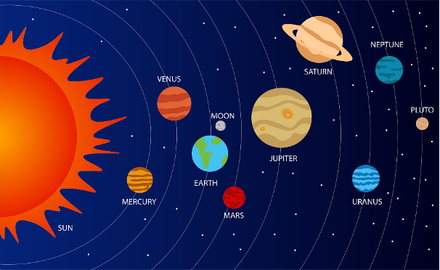 It was at that time, i.e. 100 years ago, he went on to say, that the then St. Bede’s had hit the headlines when in the glorious period of two short months they had won the inter-school Hockey Cups, the Senior Championship Cup for Athletics, lost the Junior Cricket Championship, and broken four long-standing records in Athletics. I at once made up my mind to get admission to St. Badena, for there was no other school in Mathiras with a honorary tradition like hers. I was asked to sit for an entrance examination test along with other applicants from Venus, Mars and Jupiter. The next day I landed at the school cosmodrome in my own rocket. I felt a bit strange in this place, for the Earth you know is not as modernised as the Moon. I was then conducted by an unsmiling robot towards a glass dome, which had many gadgets. Later, when I became a pupil of St. Badena, I discovered to my surprise while pursuing some old records and photographs, that robot bore a very striking resemblance to one of the school peons, who way back in 1964 had ushered all new-comers to the Principal’s office.  Very soon, the entrance examination was under way. An unseen hand pushed a button. My body began to quiver and a telepathic question was asked. I replied that A2 – B 2 = (A+B) (A–B). Another button was pushed and I found myself getting the same sensation that I felt some few seconds ago. I said that now the sea was 3 miles away, but a hundred years ago, it was 300 yards away. The unseen hand pushed a third button and some pieces of metal fell down. A bizarre voice said that this was the final question. I had to make a replica of a robot. I found myself dripping with perspiration as I underwent this practical test. But my efforts were successful. A few more buttons were pressed, and then I heard a whirring sound. It was the electronic computer at work assessing my work. A few seconds later an announcement came over the TV saying that I had passed the test. My father congratulated me on being one of the two successful candidates from the Moon. From that day onwards I used to go to school daily in my own rocket, which travelled at a safe speed of only 10,000 miles per hour…. my father’s was a much more powerful one, and he said that it would not be safe for me to travel in his much faster rocket. At St. Badena, we were taught by machines and the pictures appeared on the TV. During the intervals, my friends and I (some were Martians and some were Venusians) used to go to the school museum. There we saw photographs and other relics over a hundred years old. We were quite amused at the appearance and the dresses of the teachers and the pupils of those years. An old school magazine called “The Bedean” attracted my attention. It was dated November 1964. How funny the photographs and articles in the mag appeared. The fellows that must have been living in the pre-historic age, I thought. Suddenly, I woke up and faced the cold reality that after all I was still only in 1964. And there is but little hope that I will live to see this dream realised. Notes from the Author - Oct 21st, 2020 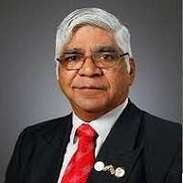 Prof. Dr. K Ganapathy Prof. Dr. K Ganapathy It all started with my searching for my school magazine to show my brother-in-law’s 13-year-old grandson articles I had written 60 years ago to encourage him. Among the articles was one I had written in 1964 about a visit to the Earth from the Moon. Reading the last sentence, “there is little hope that I will live to see this dream realised”, I am now optimistic that in my lifetime I will see the commencement of colonisation on the Moon (considering that my grandparents (all four) lived to their mid-eighties, when the average life expectancy was 52 and my parents to their eighties and nineties when the life expectancy was 58, I have good telomeres in my genes! ). In the sixties in India all bright students were expected to become doctors or engineers. When I was in XIth grade my elder brother passed away in a road traffic accident and at that minute I decided to become a doctor. When I was in the 4th year in the medical college, my eldest brother also met with a fatal accident. This resulted in my becoming a Neurosurgeon. It appears that my fascination for the Moon has been lying dormant. I would show my first grandchild the Moon from the terrace of our house and I literally brainwashed him, repeating ad nauseum, that he should plan to visit the Moon. He is in the XIth grade now and is planning to study transportation and design engineering along with astrophysics to design transportation on the Moon!! 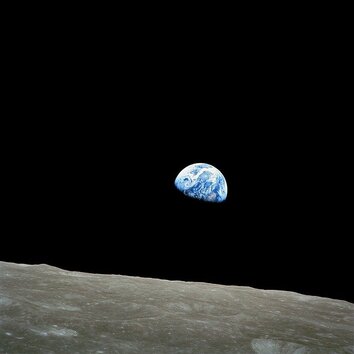 When NASA and Nokia announced plans to set up mobile towers on the lunar surface to facilitate communication within the Moon and to Earth, I was reminded of my first encounter with the telephone. It was 1958. My father was a senior Government of India officer working in Vijaywada a Tier I small city in South India. We were one of the “privileged elite” to have a telephone at home. The waiting time to get a telephone connection then was 2 years. On lifting the receiver, the operator would ask for the number (a 4-digit number). Trunk calls to other cities had to be booked and would materialise in about 8-10 hours. My father was empowered to book “lightning” calls to Delhi, which would materialise within 30 minutes. Very few could do this. My father had to talk so loudly I would wonder why an instrument was required! And 50% discount was given after 8pm. Today my youngest grandchild gets annoyed when his video call drops for 1-2 seconds once in a month!!! I deem it a privilege to belong to the “Baby Boomer” generation to have lived in the second half of the 20th century and in the first three decades of the 21st century to see humankind evolve. Belonging to the BC (Before Computers not before Corona!) Era, I firmly believe that technology is a means to an end and not the end by itself. Yes, it is wonderful to learn from my grandchildren the intricacies of the iPhone 12, but believe me, the millennials and Gen Z have no idea of what they have missed. Thanks to my meeting Prof Thais Russomano in Rio several years ago my interest in Space has been rekindled. The article I wrote 56 years ago shows that the interest has always been lying dormant!! Thank you InnovaSpace for resurrecting this contribution made in 1964. Mary UpritchardInnovaSpace Co-Founder & Admin Director
Authors: Prof Samira Bulcão Carvalho Domingues*, Prof Flávia Porto** and Prof Jonas Lírio Gurgel****Master's Degree student, Exercise and Sports Sciences/Institute of Physical Education & Sports/UERJ 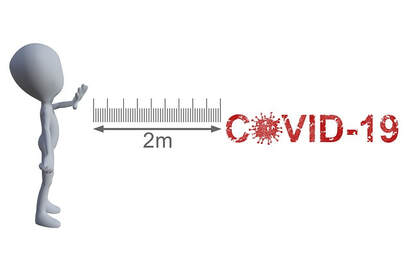 Image by Pete Linforth from Pixabay Image by Pete Linforth from Pixabay When faced with the COVID-19 global pandemic, a reduction in the numbers of people circulating is essential. It’s important to know there are differences between social distancing, isolation, quarantine and total lockdown, however, all of these strategies have one goal in common, which is to contain the speed at which the virus spreads and limit the collapse of health systems. In extended social distancing, those establishments considered to be non-essential are closed to avoid the gathering together of people, while in selective social distancing, people belonging to at-risk groups, especially the elderly, are encouraged to stay at home. In isolation, sick people (with suspected or confirmed disease) are separated from the non-sick, whether in a domestic or hospital environment. Quarantine is carried out by those people who have come into contact with or are suspected of having come into contact with the virus and, even if not presenting symptoms, they are isolated from others. When none of these measures work, a total lockdown is declared, like a community quarantine. Although essential, staying at home involves a radical change in the habits of a population, which may harm health in some way. Within the context of epidemiological normality, work, academic and leisure activities require a variety of effort that, taken together, maintain the minimum level of daily physical activity necessary for health, especially for sedentary individuals. An immediate interruption of these activities has a negative impact on the cardiorespiratory and muscle systems, responsible for maintaining functional capacity. This, in turn, is directly related to quality of life and the development of comorbidities. Similarly, and at the same time, physically active individuals are compelled to abruptly interrupt their exercise routines during this period. The damage caused by this halt in training includes losses in muscle strength and mass, aerobic capacity, and joint flexibility and mobility, in addition to alterations in body composition. The change from a physically active to sedentary life can affect important variables for health maintenance, including blood pressure, blood glucose and cholesterol levels. It is therefore advisable to use countermeasure strategies to combat the disuse. One of these is the practice of exercise - known to be the best non-drug health promotion strategy. The American College of Sports Medicine (ACSM) has already taken a position on the importance of staying physically active during isolation. The weekly recommendation for asymptomatic individuals is 150 to 300 minutes of aerobic exercise, plus two strength training sessions. One could, for example, do 5 workouts a week of 30 to 60 minutes, adding muscle strengthening exercises to two of them. The intensity should be moderate, as very light stimuli may not promote benefits, while very high intensities are associated with impaired immunity.
Although many people doubt the feasibility and efficiency of home training, the literature shows that results similar to those obtained in traditional gyms can be achieved by using one's own bodyweight as a load. Routines can include exercises based on calisthenics, both in aerobic (stationary running, climbing stairs, jumping jacks) and strength (squats, push-ups, planks) training. Accessible materials can help: elastic bands, skipping ropes, and even household items to increase the workload (water bottles, backpacks with books, bags with groceries). Authors: Prof Samira Bulcão Carvalho Domingues*, Prof Flávia Porto** and Prof Jonas Lírio Gurgel****Master's Degree student, Exercise and Sports Sciences/Institute of Physical Education & Sports/UERJ 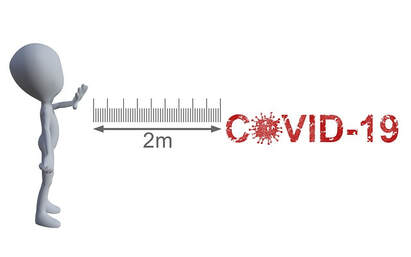 Image by Pete Linforth from Pixabay Image by Pete Linforth from Pixabay Diante da pandemia mundial de COVID-19, diminuir a circulação das pessoas é algo essencial. É importante saber que existe diferença entre distanciamento, isolamento social, quarentena e bloqueio total, porém, todas essas estratégias têm o objetivo comum de conter a velocidade de propagação do vírus e evitar o colapso dos sistemas de saúde. No distanciamento social ampliado, estabelecimentos considerados não essenciais são fechados para evitar aglomerações, enquanto que, no distanciamento social seletivo, pessoas pertencentes a grupos de risco, em especial, idosos, são estimuladas a ficar em casa. Já no isolamento, pessoas doentes (com suspeita ou confirmação da doença) são separadas das não doentes, seja em ambiente doméstico ou hospitalar. A quarentena é realizada por pessoas que tiveram contato ou suspeito de contato com o vírus e, mesmo não apresentando sintomas, ficam isoladas das demais. Quando nenhuma dessas medidas funciona, finalmente, é decretado o bloqueio total, como uma quarentena comunitária. Apesar de imprescindível, a permanência em casa implica em uma mudança radical nos hábitos da população, o que pode prejudicar, de alguma forma, a saúde. Em um contexto de normalidade epidemiológica, atividades laborais, acadêmicas e de lazer solicitam esforços variados que, somados, mantêm o nível mínimo de atividade física diária necessário para a saúde, especialmente de indivíduos sedentários. A interrupção imediata dessas atividades impacta negativamente os sistemas cardiorrespiratório e muscular, responsáveis pela manutenção da capacidade funcional. Esta, por sua vez, está diretamente relacionada à qualidade de vida e ao desenvolvimento de comorbidades. Da mesma maneira, no momento, indivíduos fisicamente ativos precisaram interromper bruscamente suas rotinas de exercícios neste período. Os prejuízos do destreinamento incluem perdas sobre força e massa musculares, capacidade aeróbia, flexibilidade e mobilidade articular, além de alterações na composição corporal. A mudança de uma vida fisicamente ativa para o sedentarismo pode impactar variáveis importantes para a manutenção da saúde, entre elas, pressão arterial, glicose sanguínea e taxas de colesterol. Assim, é oportuno lançar mão de estratégias de contramedida ao desuso. Uma delas é a prática de exercícios - sabidamente a melhor estratégia não-medicamentosa de promoção da saúde. O Colégio Americano de Medicina Esportiva (ACSM) já se posicionou quanto à importância de se manter fisicamente ativo durante o isolamento. A recomendação semanal, para indivíduos assintomáticos, é de 150 a 300 minutos de exercícios aeróbios, além de duas sessões de treinamento de força. Pode-se, por exemplo, realizar 5 treinos semanais de 30 a 60 minutos e, em dois deles, acrescentar exercícios de fortalecimento muscular. A intensidade deve ser moderada, pois estímulos muito leves podem não promover benefícios, e intensidades muito altas estão associadas a prejuízos à imunidade. Authors: Prof Flávia Porto*, Prof Nádia Souza Lima da Silva* and Prof Jonas Lírio Gurgel***Institute of Physical Education and Sports, State University of Rio de Janeiro (UERJ) 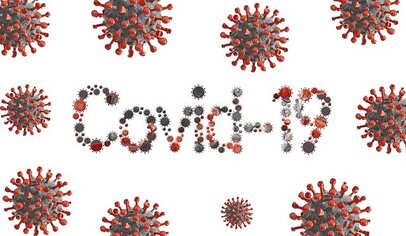 There are few known coping strategies for dealing with the coronavirus pandemic (COVID-19), but social isolation stands out. While this provides an effective way to reduce the spread of the virus, it also brings a range of problems for individuals and families, especially the elderly, such as limiting their in-person participation in health promotion programs. In a society highly connected through the Internet, a large number of seniors form part of the group that is digitally excluded, showing greater resistance to the use of digital technology tools. The current situation has imposed changes in our behaviour, serving as a catalyst for alterations in everyone's habits and leading to increased use of digital tools in order to mitigate social distancing. In this context, it is essential for health maintenance that physical exercise programs are continued during social isolation, particularly so for the elderly population, and should be part of public policy. Given this scenario, telehealth resurfaces as an instrument for health promotion and prevention, which are even more essential in the current situation. The strategy of using digital tools, like videos and web conferencing, enables continuity in physical exercise health promotion programs, which are essential to overcome the disuse imposed by confinement. In this sense, we would like to share our experience of using telehealth for the continuity of the program Elderly in Movement: Maintaining Autonomy (IMMA). How did IMMA come about? On October 17, 1989, Professor Dr. Alfredo Gomes Faria Júnior (22/08/1937 - 11/06/2019), Doctor Honoris Causa from the University of Porto, created the IMMA Project, which offers regular and free physical activities and assessments to people over 60 years of age, at the State University of Rio de Janeiro (UERJ), Brazil. It was a little early at that time to be thinking about the ageing process experienced by retired people in our country. The Brazilian demographic pyramid and entire socioeconomic context back then showed that caring for older people "was not important”. Times have changed and scientific evolution and world society has proven that longevity can (and should) be accompanied by more autonomy and quality of life for the individual. The creation of the IMMA was one of the historical milestones in Brazil, disrupting the thinking about health promotion for the elderly, predicting that, yes, these people would retire, but they would still be a part of society and, therefore, should be included. With a great chronological leap, IMMA continues to innovate and try to include the elderly in a society that is once again discussing the importance of older people in the composition of our community. When Brazilian President Jair Bolsonaro proposes vertical isolation, i.e., the elderly remain at home without contact with younger members, who can continue generating the necessary wealth for the country; and when recent speeches by the new Minister of Health suggest that if faced with a choice between saving an elderly person or an adolescent, priority should be given to the young for economic reasons, it is time to return to defending the portion of the population that is most vulnerable. The IMMA in current times This new coronavirus has left us living in a time of crisis and local authorities are asking us to remain isolated at home whenever possible, and for this reason, activities at the UERJ have been suspended. Nonetheless, given this scenario and considering the importance of its students remaining physically active, the IMMA decided to continue functioning. In an innovative way, physical activities always guided in person, in addition to "live" hugs and greetings, gave space for a greater exchange of messages via WhatsApp. The IMMA team's major concern was to minimise the functional losses that physical inactivity could cause in the elderly, both from a cognitive and physical point of view. Therefore, daily cognitive games were initially proposed, giving the team the necessary time to set up the training routines to be performed at home by the elderly. Participation was immediate, interaction was great, and everyone’s mood lifted in these times of uncertainty. Good-humoured reports and thanks also came from family members of the participating elderly. After the round of cognitive games came the first physical exercise classes, which were joined by parents of the Physical Education students, members of the IMMA team, who served as models in their videos and instructional photos (as a university project, it is worth mentioning that the IMMA serves as a field of pedagogical activity for Physical Education academics at UERJ). The adherence of participants was inspiring, especially as the elderly began to send videos and photos of their individual routines. Finally, in these confusing and difficult times, the IMMA continues to maintain its social commitment, innovating, stimulating and contributing to the health and quality of life of its users, demonstrating that we can unite, even at a distance, to combat the adverse effects of confinement. Authors: Prof Flávia Porto*, Prof Nádia Souza Lima da Silva* and Prof Jonas Lírio Gurgel***Instituto de Educação Física e Desportos, Universidade do Estado do Rio de Janeiro (UERJ) 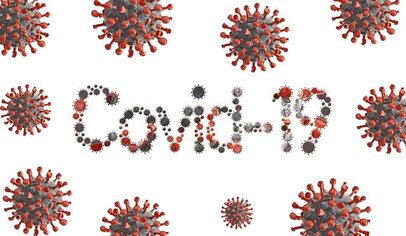 A pandemia do coronavírus (COVID-19) nos impõe poucas estratégias de enfrentamento, das quais se destaca o isolamento social. Se por um lado tal medida proporciona uma eficaz forma para reduzir a proliferação do vírus, por outro, traz uma gama de problemas para os indivíduos e para as famílias, em especial para os idosos, como limitá-los a participarem presencialmente de programas de promoção da saúde. Em uma sociedade altamente conectada, através da internet, boa parte dos idosos ainda compõe o grupo dos excluídos digitais, apresentando uma maior resistência ao uso de ferramentas de tecnologia digital. A atual conjuntura vem impondo mudanças em nosso comportamento, servindo de catalisador para modificações dos hábitos de todos, levando-nos a aumentar o uso de ferramentas digitais de modo a mitigar o distanciamento social. Neste contexto, formas visando a continuidade de programas de exercícios físicos durante o isolamento social, principalmente para a população idosa, são essenciais para a manutenção da saúde, devendo fazer parte das políticas públicas. Diante desse quadro, a telessaúde ressurge como mais uma ferramenta de promoção e prevenção da saúde, as quais são ainda mais essenciais na atual conjuntura. A estratégia de utilizar ferramentas digitais, como vídeos e webconferência, possibilita a continuidade dos programas de promoção da saúde através do exercício físico, que são essenciais para superar o desuso imposto pelo confinamento. Neste sentido, gostaríamos de dividir nossa experiência com o uso da telessaúde para a continuidade do programa Idosos em Movimento: Mantendo a Autonomia (IMMA). |
Welcometo the InnovaSpace Knowledge Station Categories
All
|
UK Office: 88 Tideslea Path, London, SE280LZ
Privacy Policy I Terms & Conditions
© 2024 InnovaSpace, All Rights Reserved
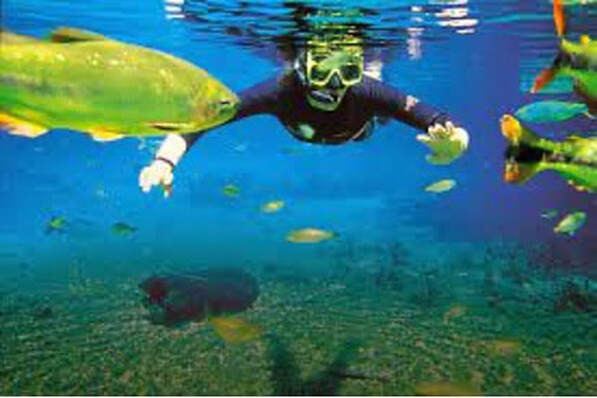
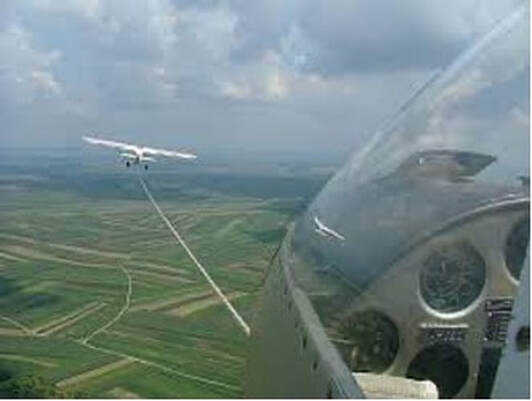

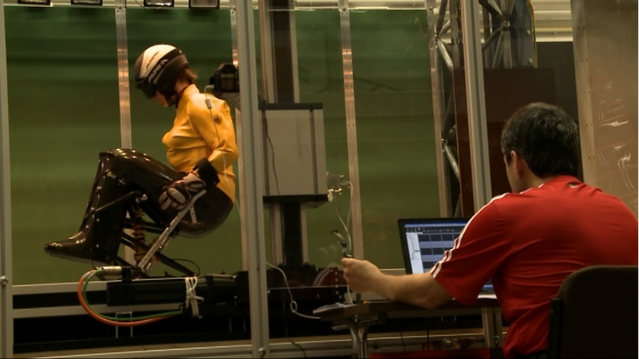
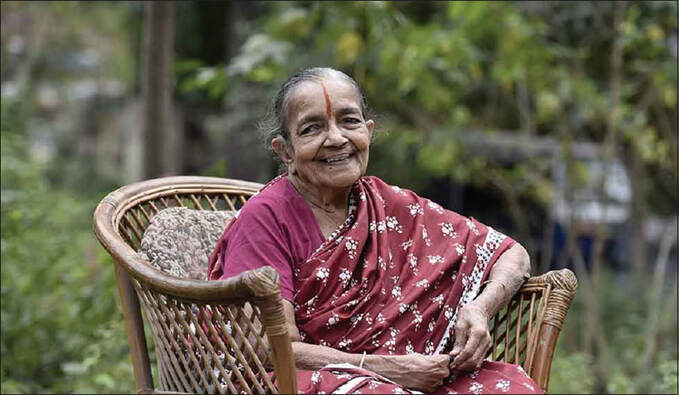
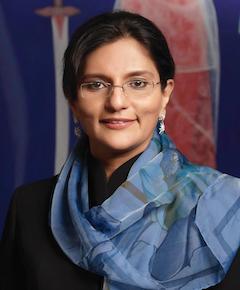
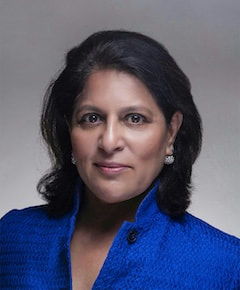
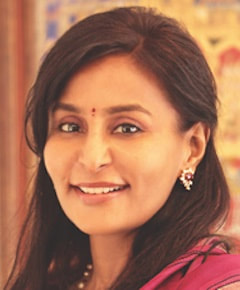
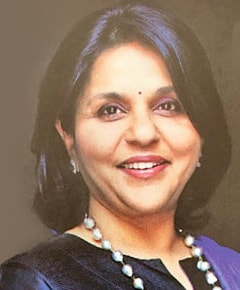
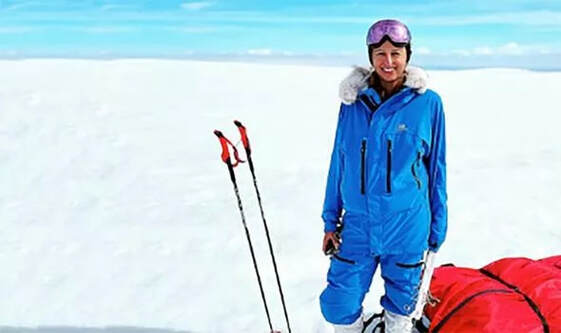
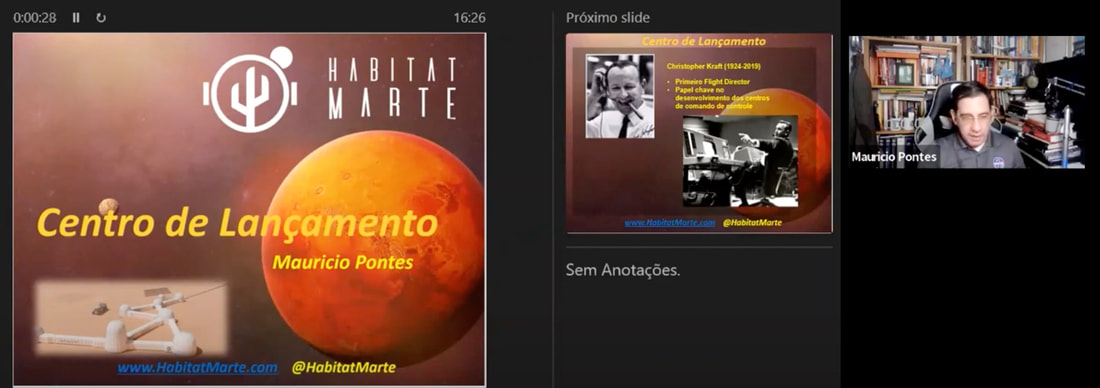

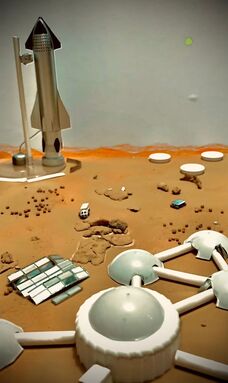
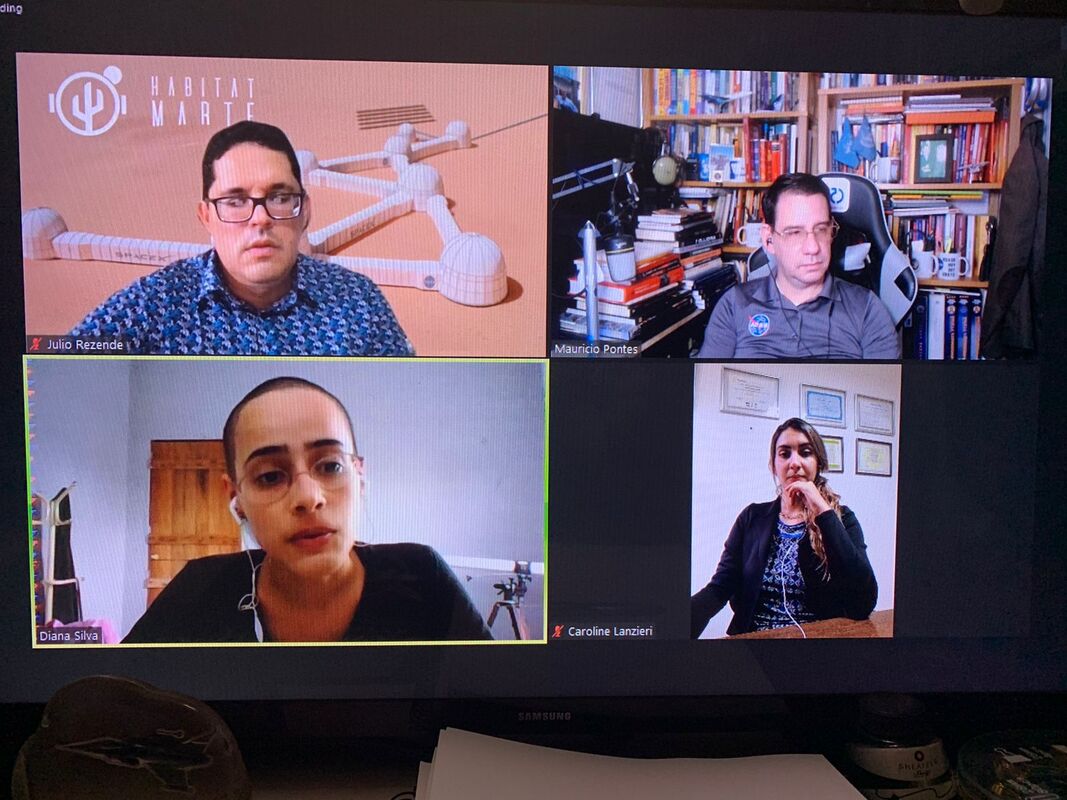
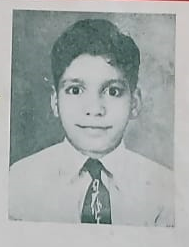
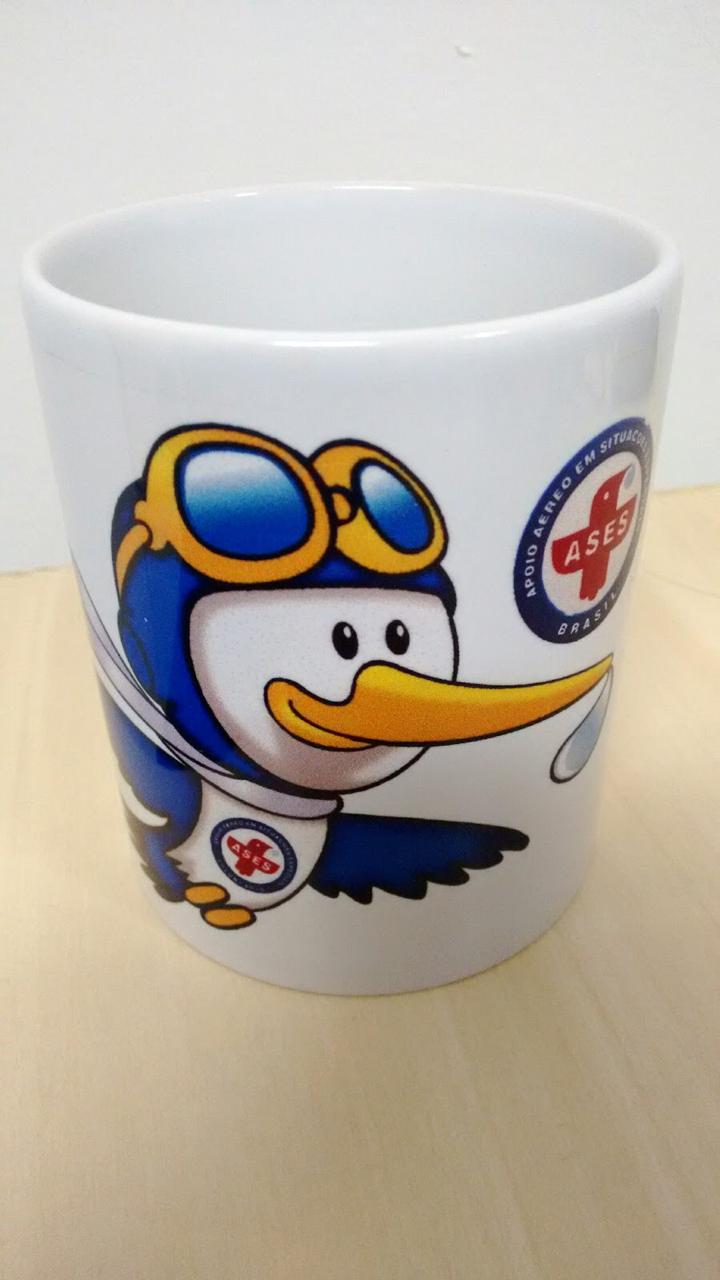
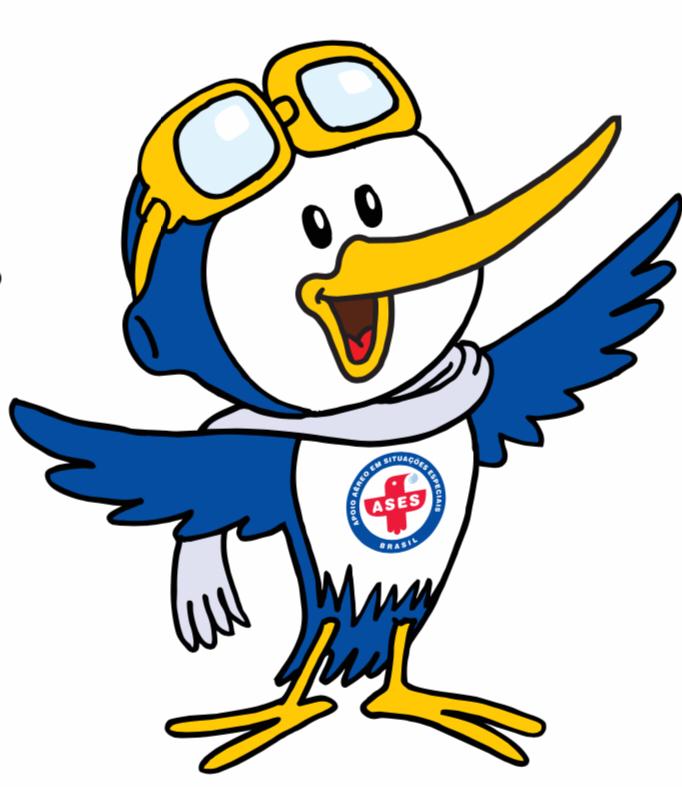

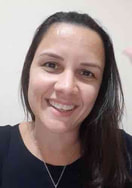
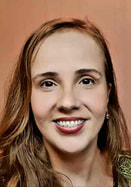
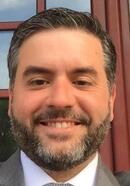
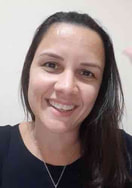
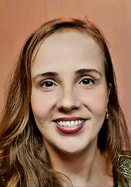
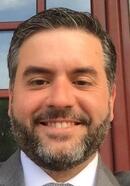

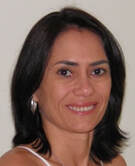
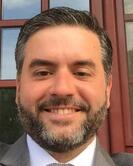


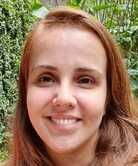
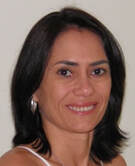

 RSS Feed
RSS Feed